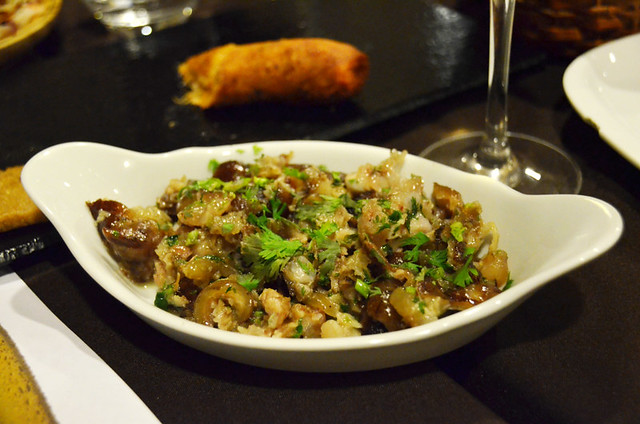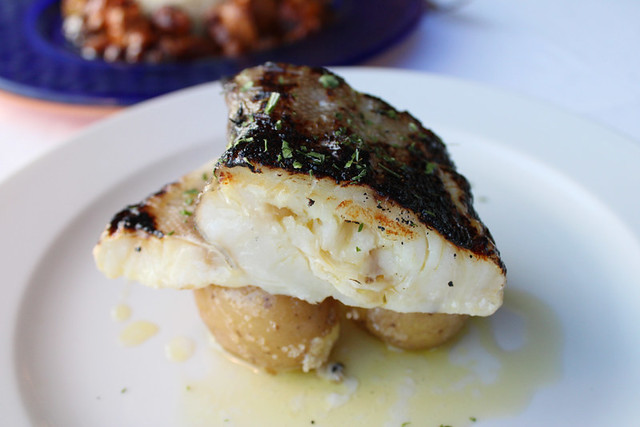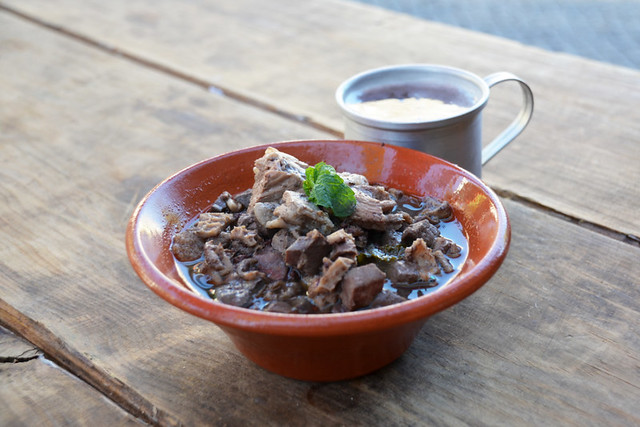There can be a tendency in travel articles for everything to be absolutely fabulous darling, especially in relation to local food. I’ve lost count of the times I’ve read about a travel writer stumbling across a restaurant filled with locals picking at something like a delicious tapa of oreja de cerdo a la plancha, or tucking into a dreamy dessert called toucinho rançoso.
Using the non-English spelling not only helps make food sound interesting and different. It also sounds more appealing than writing about bits of pigs’ ears or yet another dull egg and almond pudding, even if it does have an intriguing name like rancid lard.

Other country’s dishes, irrespective of what they involve, are invariably presented in travel articles as though they’re all exceptionally tasty just because they are authentic. The reality is this isn’t always the case.
Whenever we visit anywhere new, we’re keen to try whatever local specialities we find on menus; however bizarre they may seem. In the last decade or so, we’ve worked our way through scores of regional dishes in the likes of France, Spain, Portugal, Greece, Croatia, Italy, Slovenia, Germany, and Austria. When food is referenced in travel pieces, we often know what it is from first-hand experience. We don’t always agree with how it’s presented, often that’s because too many travel articles are compiled from desk-based research.

This happened last week when I saw bacalhau á bras described as elegant in a newspaper article. Admittedly, I’m not the biggest fan of salt cod (bacalhau in Portugal, bacalao in Spain). I like it when it’s done well, but too often it can be hit and miss – I had a rank bacalao dish in Galicia earlier in the year. Bacalhau á bras I generally like; however, being a mish mash of shredded salt cod, matchstick potatoes, egg, olives, and onion, it’s not a pretty-looking dish and it’s certainly not elegant.

Why ‘big-up’ a dish? Why not admit it’s messy, but tasty? It’s that element which is too often missing for me in travel writing. There are many dishes out there which fall into that category. Saying so adds authenticity. Not saying so makes me wonder if the person who wrote about it has actually tried it.

And some dishes are just not great. Sometimes they are necessary by-products of people not having a lot of money, and taste like it. I forced myself through a bowl of buckwheat mush and sour milk in Slovenia. It wasn’t as bad as it sounds, bit I wouldn’t be rushing to order it again. Pigs ears I ate in Portugal were chewy and still had bits of hair attached – not the best dining experience I’ve had. On the other hand, a bowl of spicy offal, sarapatel, is one of my favourite Portuguese dishes. But it’s not going to suit every palate.

And that’s what I’d like to see more of in travel articles. Honesty. I’d love to read something like: “I settled into a stool at the crowded bar, squeezing in between an inebriated caballero with bloodshot eyes and a woman who’d tried to drown herself in a bottle of cheap perfume, and asked the barman for the house special. He placed a bowl of what looked like cat vomit in front of me, explaining it was something called escaldón de gofio. I had my doubts, but when I finally persuaded my mouth to open and accept a spoonful it was, well, okay.”
But, for a variety of reasons, that simply isn’t going to happen.




Be the first to comment